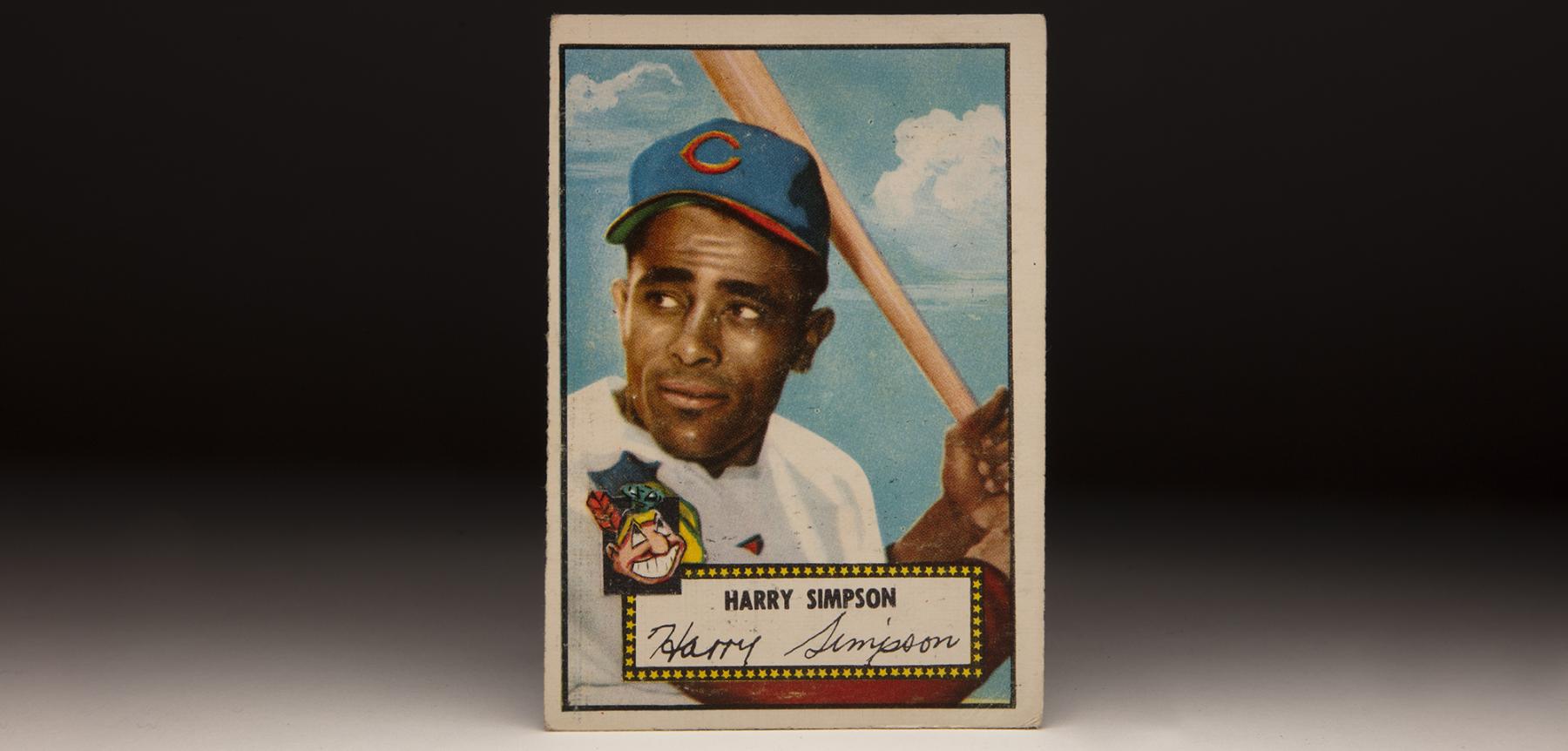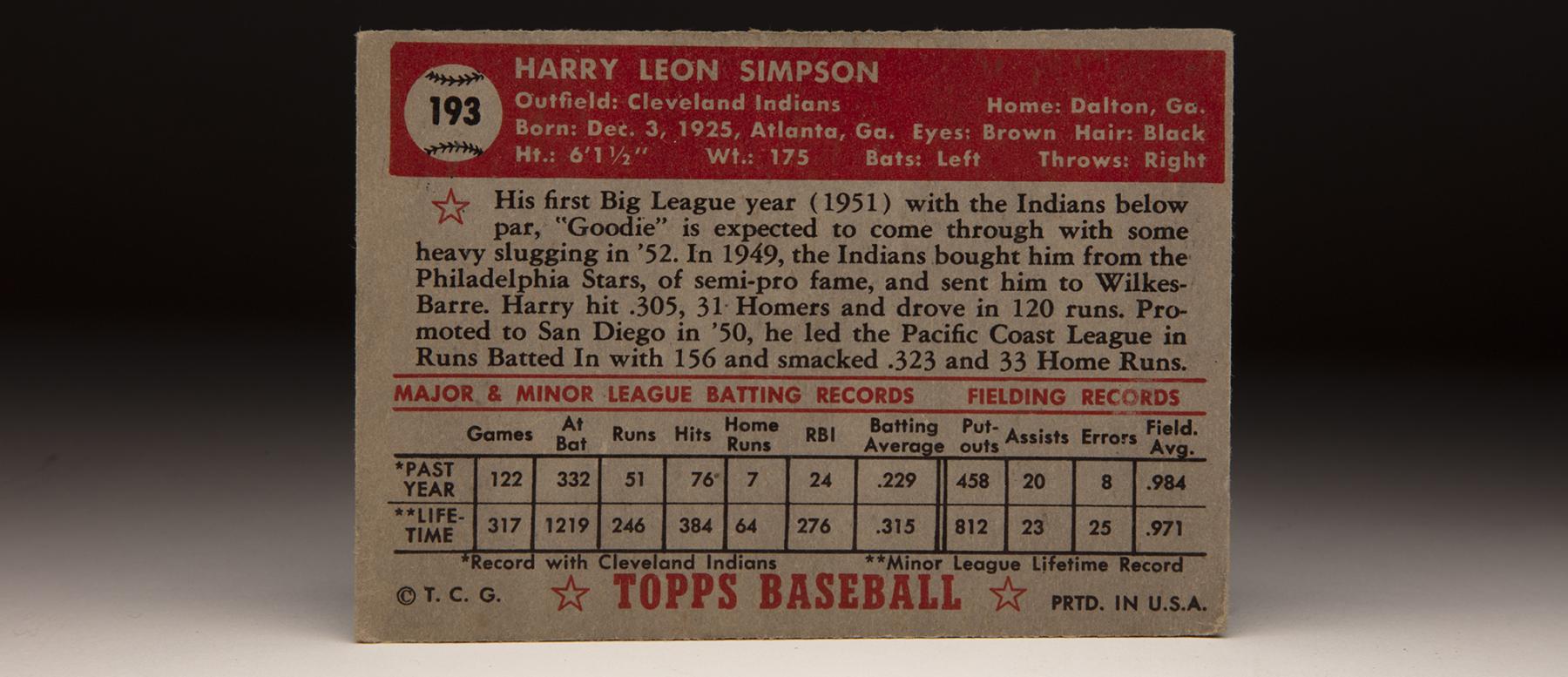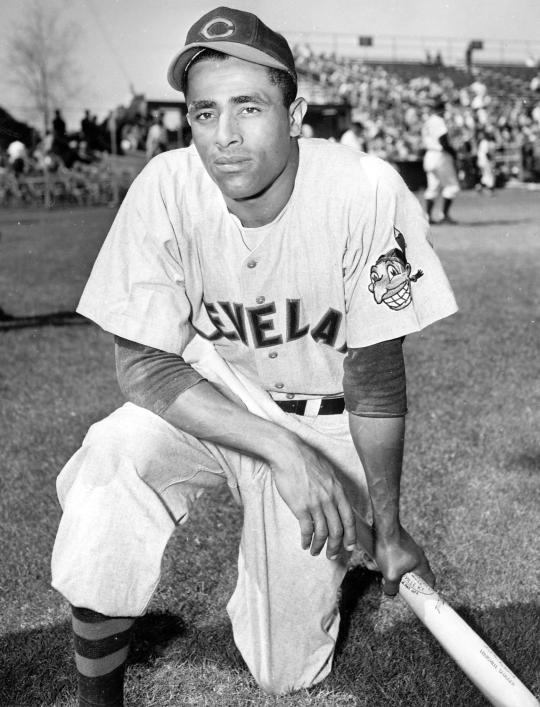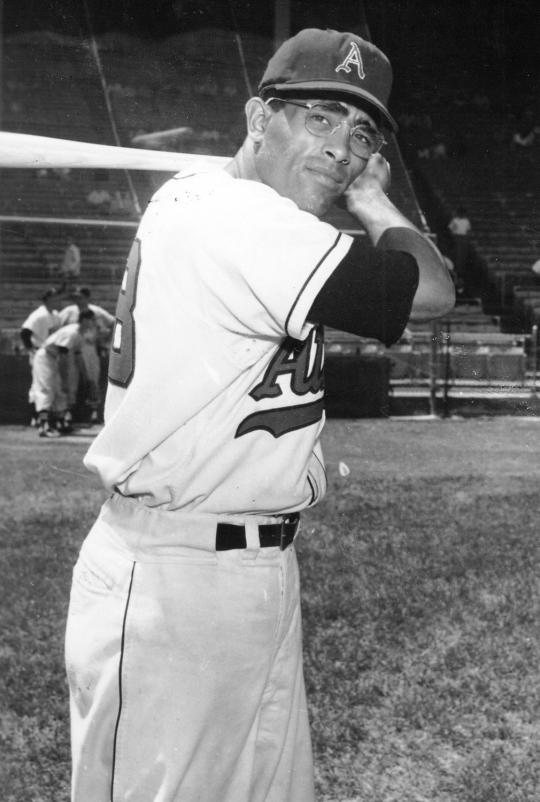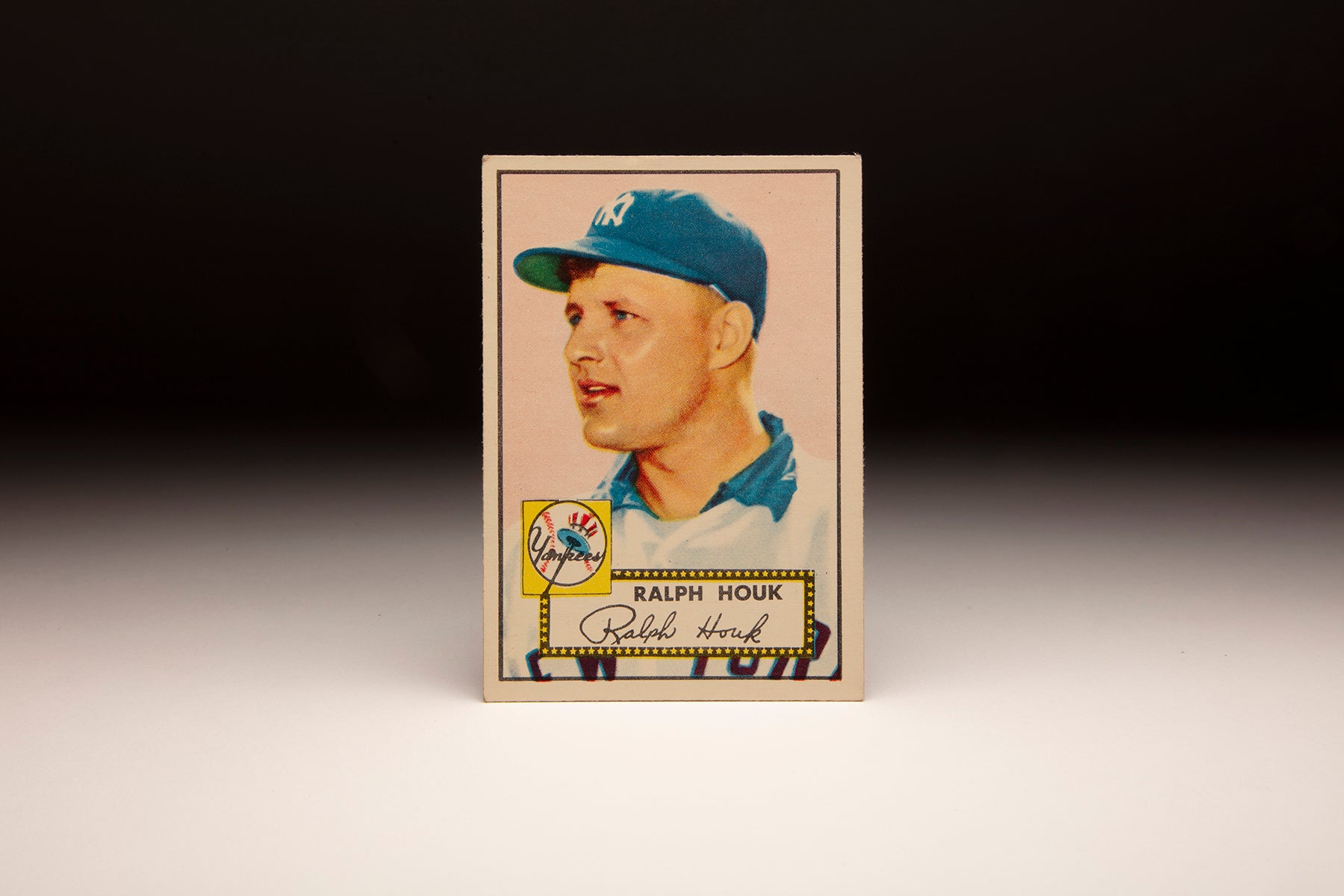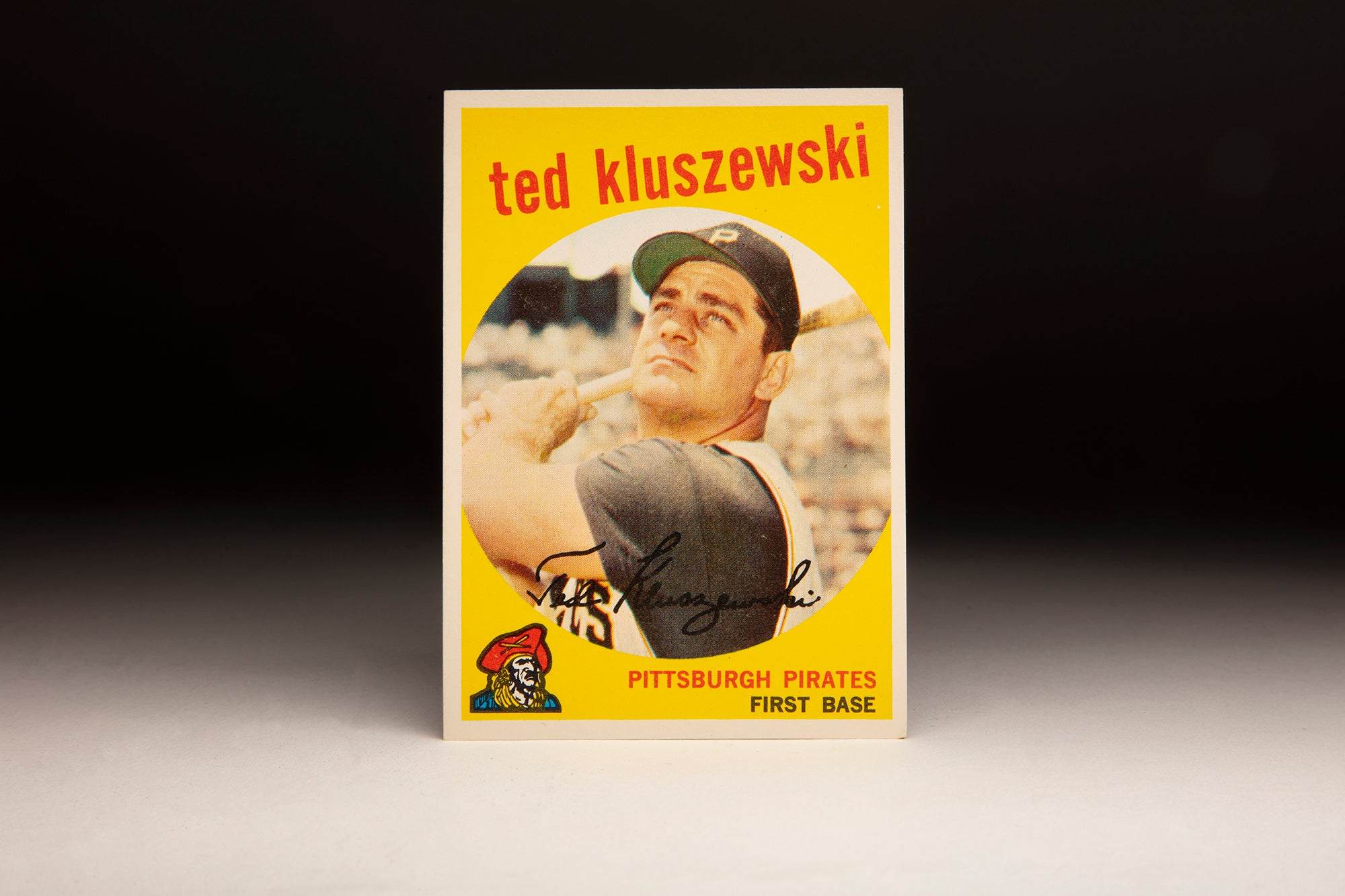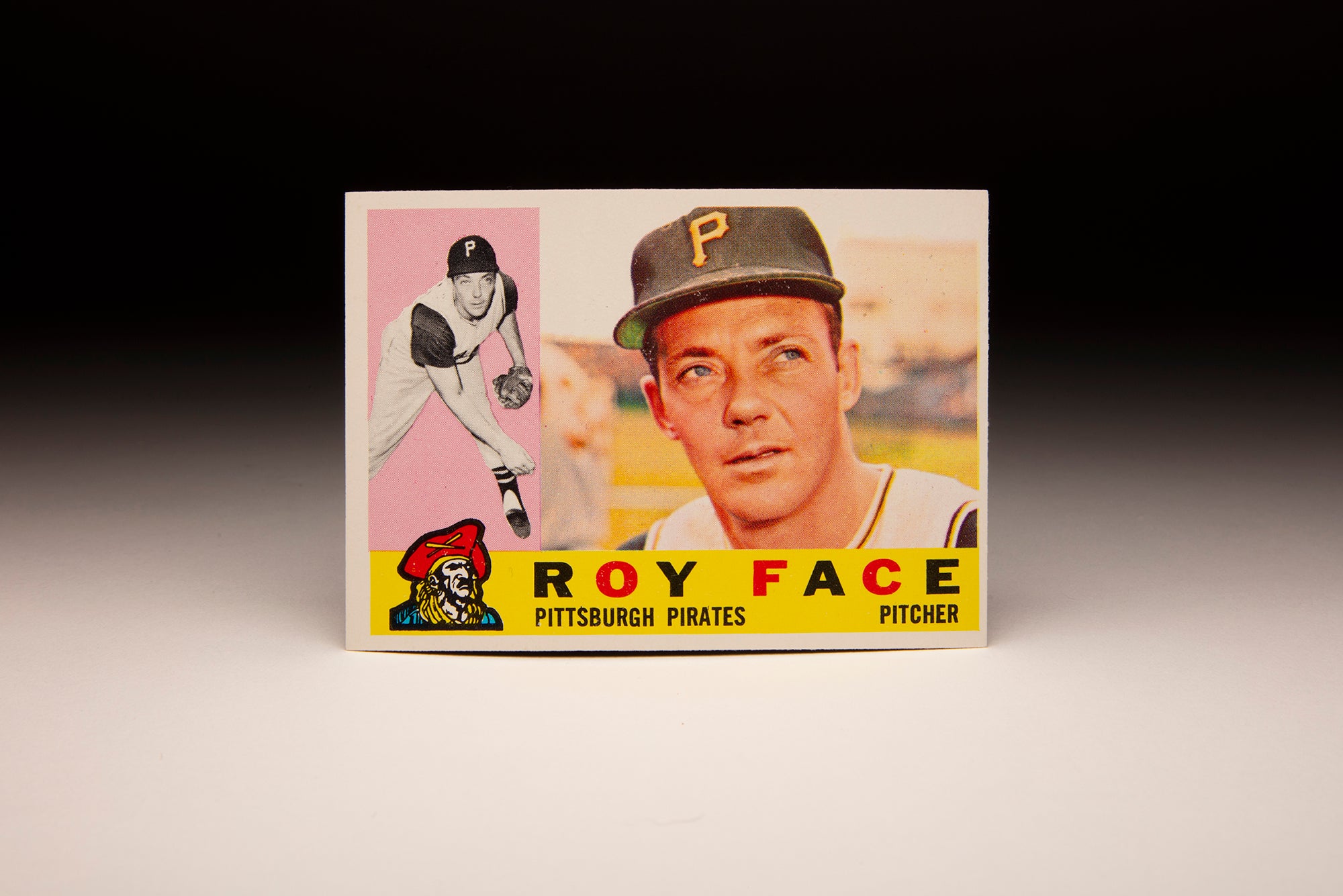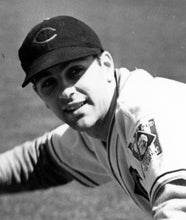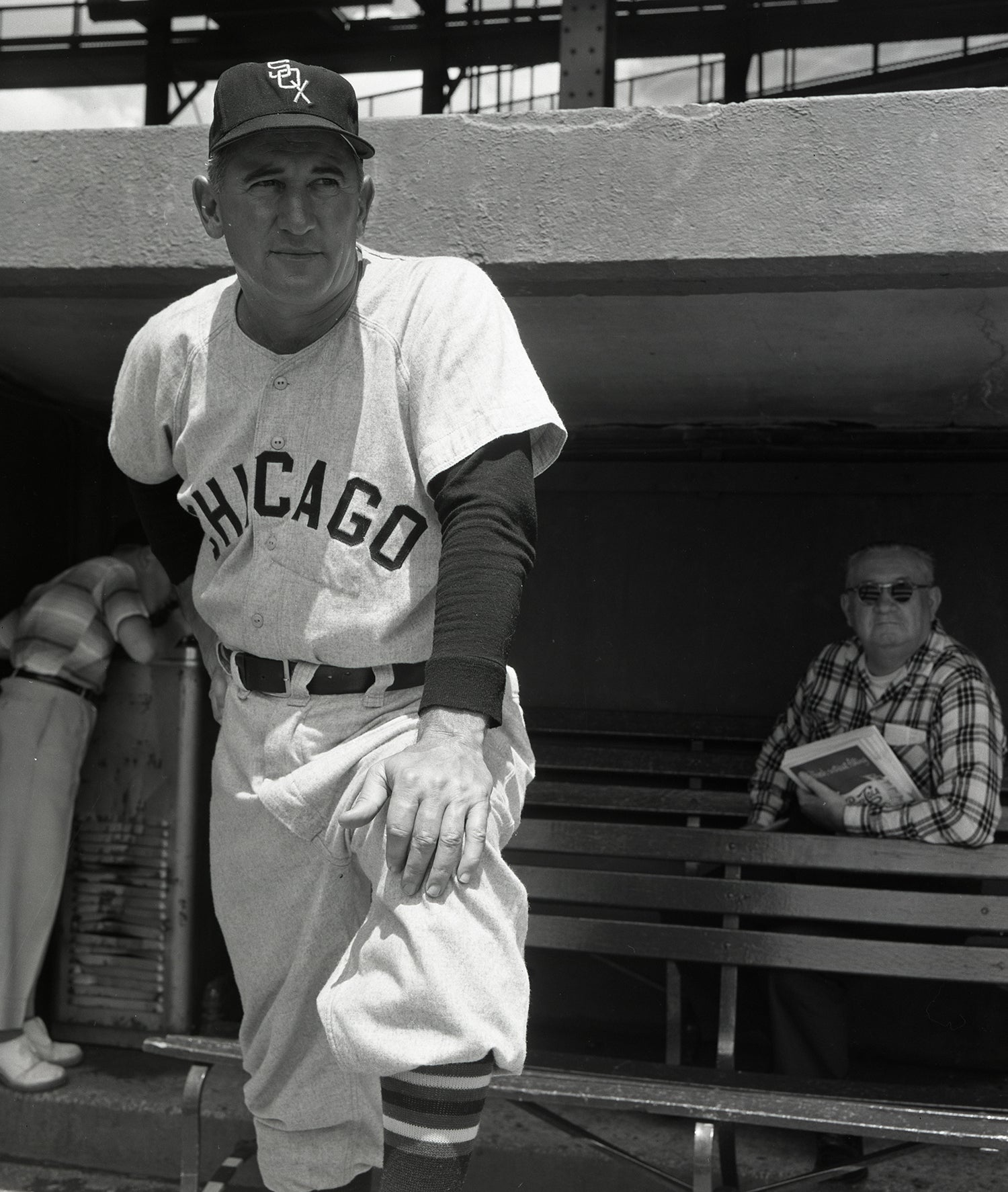- Home
- Our Stories
- #CardCorner: 1952 Topps Harry Simpson
#CardCorner: 1952 Topps Harry Simpson
In an era where players – especially All-Stars – remained with the same team for a decade or more, Harry Simpson stood out on the pages of the record books of the day.
From 1955-59, Simpson played for multiple teams in each of four seasons over that five-year stretch. So it seemed only fitting that writers referred to him as “Suitcase Simpson” – almost to the exclusion of his given first name.
In fact, Simpson’s nickname came from a cartoon and was acquired during his days in the Negro Leagues before he ever got to the majors. But the sweet-swinging lefty proved that a “have bat, will travel” reputation will keep a player employed in baseball for a long time.
Born Dec. 3, 1925 in Atlanta, Harry Leon Simpson grew up in Dalton, Ga., just over the state line from Chattanooga, Tenn. At the age of 15, Simpson enlisted in the Army and served through the end of World War II. In 1946, he signed to play with the Philadelphia Stars of the Negro National League, spending parts of three seasons with the team while deciding whether struggling through Negro League seasons was worth the potential payoff.
“It was a tough life,” Simpson told the Newspaper Enterprise Association news service in 1963 when he was finishing out his career with the International League’s Indianapolis Indians. “Sometimes you’d play in five cities in five nights and never see a bed. A lot of times on holidays, we’d play a doubleheader at the Polo Grounds in the afternoon, then drive 60 or 70 miles to some little town in New York and play that night. We played every day.”
Simpson played in a handful of Negro League games in 1947 and 1948, often supplementing his income with outside work. But he picked up his nickname during this time when a sportswriter compared Simpson’s shoe size to that of “Suitcase Simpson” – a character in the widely syndicated Toonerville Folks newspaper cartoons. The character’s feet were so big that they were compared to suitcases.
“At first I didn’t like the name,” Simpson said in the 1963 NEA story. “Whenever anybody called me it, they just naturally looked at my feet. Now, I’m used to it.
“When I’m introduced as Harry Simpson, it doesn’t mean anything. But when I’m introduced as Suitcase, people say; ‘Oh, the big league ballplayer.’”
Simpson got his big league break prior to the 1949 season when he impressed Indians general manager Hank Greenberg during a tryout in Arizona – earning a contract. At 6-foot-1, 180 pounds, Simpson’s lanky left-handed swing translated into repeatable mechanics that impressed teammates and opponents alike.
Simpson hit .305 with 31 homers for Class A Wilkes-Barre of the Eastern League in 1949, then dominated the Pacific Coast League with San Diego in 1950 – batting .323 with 33 homers and 156 RBI in 178 games for the Padres.
In 1951, he was invited to the Indians’ Spring Training camp in Tucson, Ariz.
“He’s an all-around player,” Greenberg told the Arizona Daily Star. “He can hit, run and field. There’s no doubt in my mind that he is an outstanding player. He’s major league material.”
Simpson made the Indians’ roster but did get his first start until May 1, when first baseman Luke Easter was sideline due to a sprained knee. Simpson took advantage of the opportunity, going 6-for-7 in games on May 1 and 2 against the Red Sox while filling in for Easter.
“I never knew he played the position,” Indians manager Al Lopez told the United Press, who had seen Simpson in action mostly as an outfielder. “But he worked so well during practice that it was worth a gamble.”
When Easter returned to the lineup, Simpson got regular action off the bench – hitting .229 with a .325 on base percentage and 51 runs scored in 122 games.
Following the 1951 season, Simpson barnstormed throughout the south with a team that featured future Hall of Famers Roy Campanella, Monte Irvin and Willie Mays. He repeated the tour in 1952, picking up valuable experience while working some of the best ballplayers of his time.
As the Indians primary right fielder in 1952, Simpson hit .266 with 10 homers, 65 RBI and 66 runs scored in 146 games. But after a fast start in 1953 that followed a change in his batting stance, Simpson injured his back after colliding with teammate Bobby Avila while chasing a pop fly off the bat of the White Sox’s Sam Mele. Simpson was taken off the field on a stretcher and missed the next 28 games.
When he returned in August, Simpson was unable to get untracked and finished the season with a .227 batting average and 22 RBI in 82 games.
Then on March 24, 1954, Simpson fractured his left arm in an exhibition game against the Cubs while trying to score following a passed ball. That came on the heels of a broken wrist he suffered while barnstorming after the 1953 season.
By the time his arm healed, Simpson found himself out of a job as Dave Philley took over right field for Cleveland – which was en route to 111 victories and the American League pennant. The Indians sent Simpson to Triple-A Indianapolis, where he hit .282 in 100 games.
Then, after appearing in three of the Indians first 20 games in 1955 – all as a pinch hitter – Simpson was sent to the Kansas City Athletics on May 11 in a cash transaction. It would be the first of many moves for Simpson – and would allow him the chance to once again get regular work.
Simpson quickly earned the job as the A’s regular center fielder, hitting .301 with 52 RBI in 112 games for Kansas City. The next season, settling in as the team’s right fielder, Simpson hit .293 with 21 home runs, 105 RBI and an AL-best 11 triples while earning an All-Star Game berth and finishing 11th in the AL Most Valuable Player voting.
Simpson credited the turnaround to Athletics manager Lou Boudreau.
“I got to the point that I didn’t know what I was doing,” Simpson told the Tampa Bay Times of his struggles with his batting stance. “I became the best two-bounce hitter to the second baseman you ever say. Swing with all my might and the ball would skip down to him.
“Imagine my surprise (following the trade to the A’s) when Lou Boudreau tells me I’m hitting fourth and to hit any way it felt good to me. I could hardly believe my ears.”
Boudreau, who was the Indians manager in 1949 and 1950 when Simpson was playing in Cleveland’s minor league system, got the benefit of good play from Simpson but not many wins. The Athletics lost a combined 193 games in 1955 and 1956 – and they were headed for another 90-plus loss season in 1957 when Simpson was dealt to the Yankees on June 15 along with Ryne Duren and Jim Pisoni in exchange for Woodie Held, Billy Martin, Bob Martyn and Ralph Terry.
The trade was the fallout following the famous Copacabana incident the month before that featured Martin, Whitey Ford and Mickey Mantle, among others. While celebrating Martin’s 29th birthday, a fight ensued at the nightclub – and the Yankees felt a move was necessary.
“I hate to leave this club,” Martin told the New York Daily News. “(But) I knew it was coming all along.”
For Simpson, it meant the chance to once again play on a pennant contender. Hitting .296 at the time of the trade, Simpson saw regular action as an outfielder and first baseman down the stretch, finishing the season with a .270 batting average, 13 homers, 63 RBI while once again leading the AL in triples with nine.
“I kept my fingers crossed and hoped it would be true,” Simpson told the United Press of the trade, which was rumored for well over a week. “This is a great club to be on. I only hope I can help them win the pennant.”
The Yankees won the AL pennant for the third straight season that year, and Simpson played in five of the seven World Series games against the Milwaukee Braves. He started in four of the contests at first base, but had only one hit in 12 at-bats as the Yankees lost in seven games.
“I’m just over anxious,” Simpson told the Associated Press prior to Game 7 – a contest in which he did not appear. “I’ve been trying too hard, I guess.”
Simpson was bitten by the injury bug again in 1958. On April 8 in an exhibition game against the Phillies in Greenville, S.C., he was hit by a pitch from Curt Simmons and suffered a fractured right wrist. He returned to action three weeks later but appeared in only 24 of the Yankees first 52 games. Exactly one year to the day he was traded from Kansas City to New York, the Yankees returned Simpson to the Athletics along with Bob Grim in exchange for Duke Maas and Virgil Trucks. That same day, the A’s acquired Roger Maris from the Indians – setting the stage for the 1959 deal that would send Maris to the Yankees.
Back in Kansas City, Simpson moved into the starting lineup as the A’s first baseman but was unable to recapture the magic of his 1956 season. He finished the 1958 campaign with 11 pinch-hitting assignments over 13 September games, batting .255 in 102 games for the season.
In 1959, Simpson was relegated to a bench role with the A’s in April before starting three straight games at first base May 1-3. It may have been an audition for the rest of the league, because following the May 3 game the A’s shipped Simpson to the White Sox in exchange for Ray Boone.
Now a bench player and occasional right fielder for a White Sox team charging toward the pennant, Simpson proved to be a valuable commodity – but not on the field. On Aug. 25, after hitting .187 in 38 games for Chicago, Simpson was traded with a minor leaguer to the Pirates in exchange for slugger Ted Kluszewski.
Kluszewski, who had three straight 40-homer seasons for the Reds from 1953-55, hit .297 with two homers and 10 RBI in 31 games for the White Sox down the stretch. Then in the World Series, Kluszewski hit .391 with three homers and 10 RBI as Chicago lost to Los Angeles in six games.
Simpson, meanwhile, had four hits in nine games for the Pirates. Five days after the World Series ended, the Pirates exercised their option and sold Simpson back to the White Sox. It was a trip that cost Simpson roughly $3,000 for the World Series share he did not receive.
Simpson was unable stick with Chicago in 1960, however, and hooked on with San Diego of the Pacific Coast League in June, returning to scene of his monster season of 1950. Simpson hit .222 in 95 games with the Padres, then hit .303 with San Diego in 1961, tallying 24 home runs and 105 RBI for the White Sox Triple-A affiliate.
Simpson returned to Indianapolis in 1962, hitting .279 with 19 homers and 79 RBI in his final full season in affiliated pro ball. He played in 11 games with Indianapolis in 1963 before moving to the Mexico City Reds of the Mexican League that season, hitting better than .300 with the Reds in both 1963 and 1964 before calling it a career.
In 888 games over eight big league seasons, Simpson hit .266 with 73 homers and 381 RBI. He moved to Akron, Ohio, during his career and worked at the Goodyear Tire & Rubber Company following his days on the diamond.
Simpson passed away on April 3, 1979. But his legacy of a bat for hire has lived on into a new century – as does his memorable nickname.
Craig Muder is the director of communications for the National Baseball Hall of Fame and Museum

